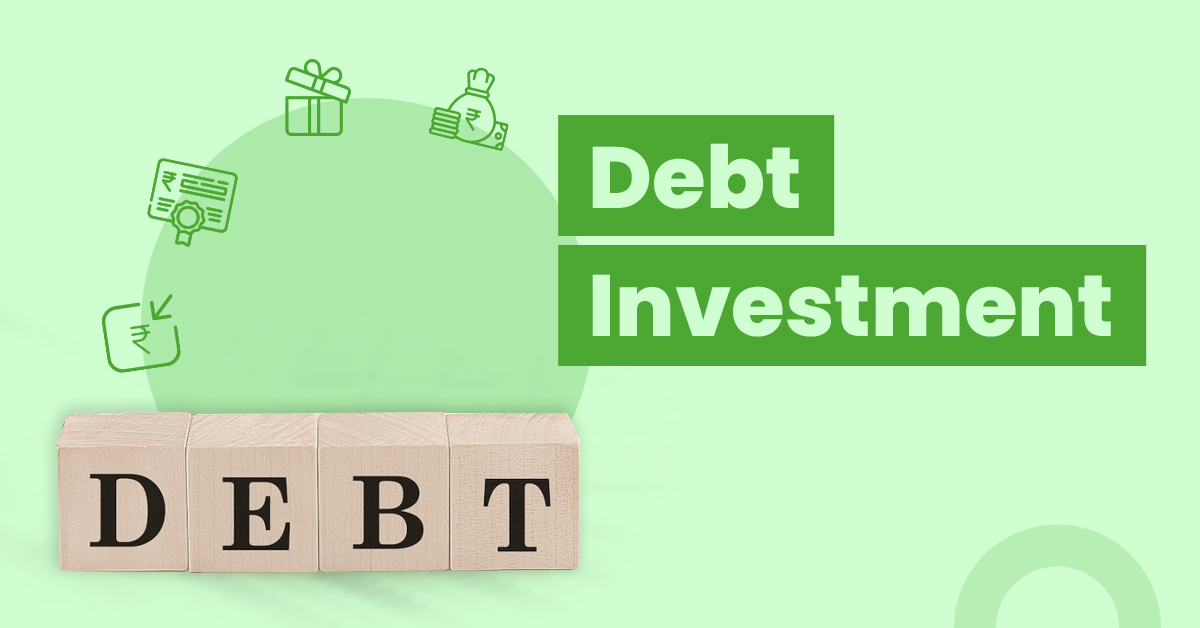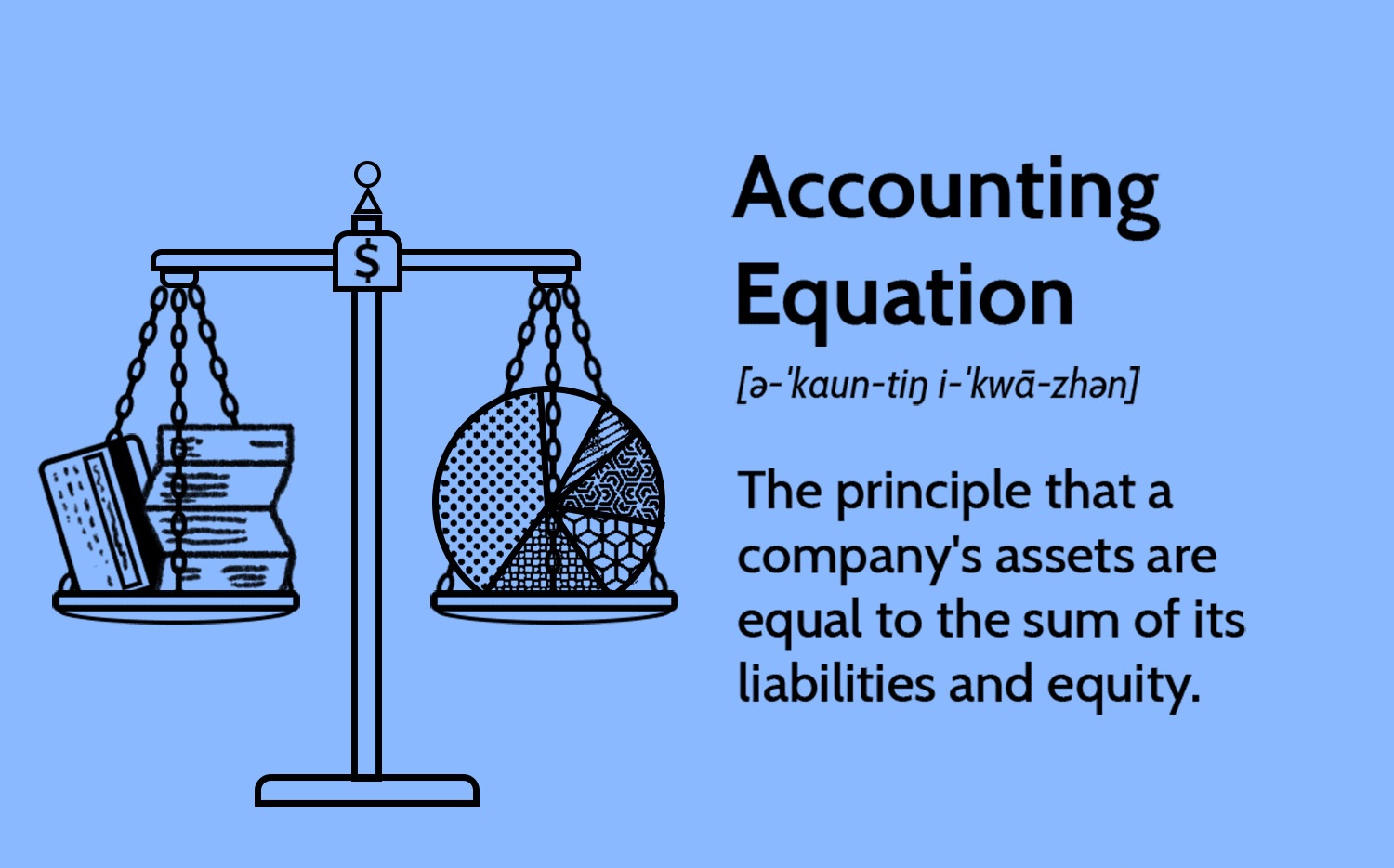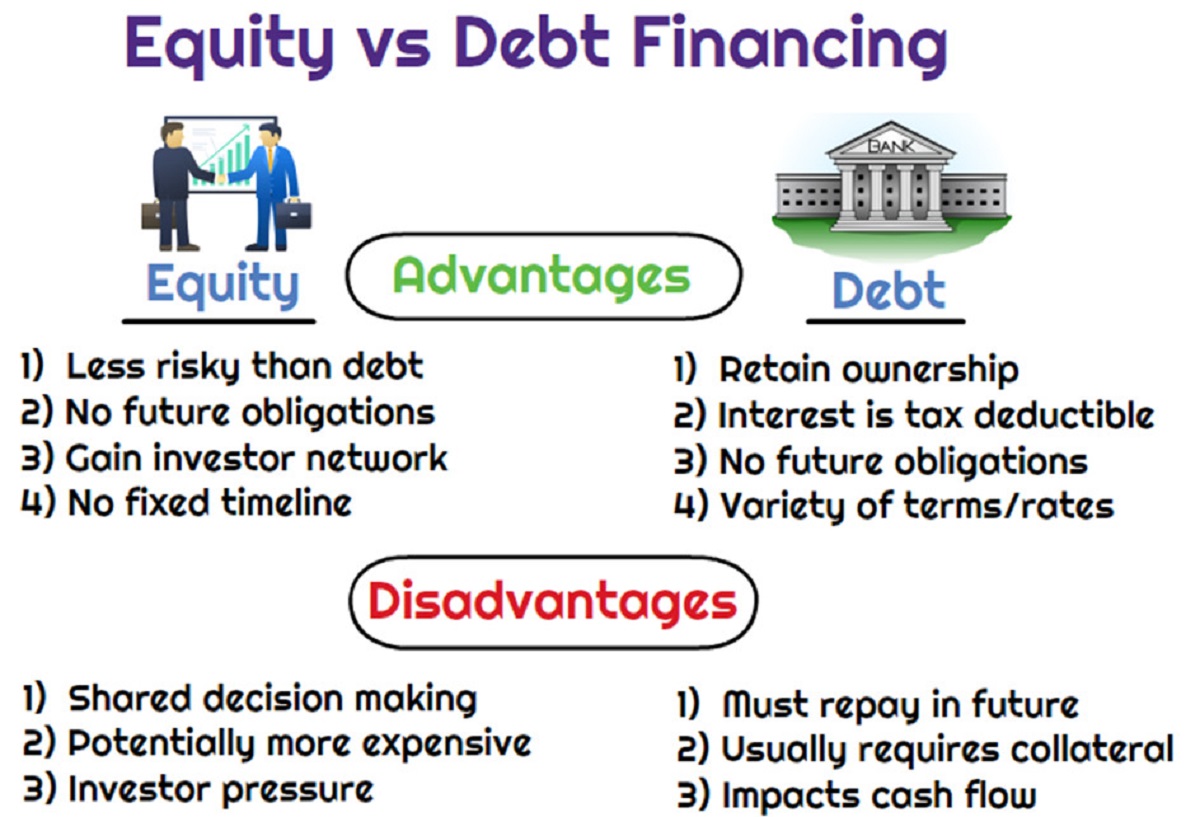Introduction
Debt investments are a popular avenue for investors seeking a stable and reliable source of income. Whether you’re a seasoned investor or just starting to explore investment opportunities, understanding the concept of debt investments can be crucial to building a diversified portfolio. In this article, we will delve into the world of debt investments, exploring what they are, how they work, and the advantages and risks associated with them.
At its core, debt investment refers to lending money to a borrower in exchange for regular interest payments and the return of the principal amount at maturity. Unlike equity investments, which involve purchasing shares of ownership in a company, debt investments provide a fixed income stream without any ownership stake.
Debt investments come in various forms, ranging from government bonds and corporate bonds to mortgages and peer-to-peer lending platforms. The popularity of debt investments can be attributed to their relatively lower risk compared to other investment options.
In this article, we will explore the different types of debt investments, the mechanisms by which they function, and the factors to consider before investing in them. We will also discuss the advantages and disadvantages of debt investments, helping you make informed decisions about incorporating them into your investment strategy.
It is important to note that debt investments are not without risks. Factors such as interest rate fluctuations, credit risk, and default risk can impact the returns associated with debt investments. Therefore, understanding the potential risks involved and conducting thorough research is vital before allocating funds to debt investments.
By the end of this article, you will have a comprehensive understanding of debt investments and be equipped with the knowledge to make informed decisions about whether they align with your investment goals and risk tolerance.
Definition of Debt Investments
Debt investments, also known as fixed income investments, are financial instruments that involve lending money to a borrower in exchange for regular interest payments and the repayment of the principal amount at maturity. In simple terms, when you invest in debt securities, you become a creditor of the borrower.
Debt investments are typically issued by governments, corporations, or financial institutions as a way for them to finance their operations or projects. These investments are considered less risky compared to other types of investments, such as equity investments, as they offer a predictable income stream and a predefined timeline for repayment.
One of the most common forms of debt investments is bonds. Bonds are essentially IOUs where the issuer promises to repay the principal amount on a specified date, known as the maturity date, along with periodic interest payments until that date. Government bonds, corporate bonds, municipal bonds, and treasury bonds are all examples of debt investments in the form of bonds.
Another type of debt investment is loans. Loans can take various forms, such as mortgages, personal loans, or business loans. In these cases, the borrower receives a lump sum amount and agrees to make regular interest payments and repay the principal amount according to the terms of the loan agreement.
Debt investments can also be made through investment vehicles like mutual funds or exchange-traded funds (ETFs). These funds pool money from multiple investors and invest in a diversified portfolio of debt securities, offering investors access to a broad range of debt investment opportunities that would be otherwise difficult to access individually.
The primary objective of debt investments is to generate income for the investor. The interest payments received during the life of the investment, as well as the repayment of the principal amount at maturity, contribute to the total return of the investment. However, it is essential to note that the returns on debt investments are typically lower than potential returns from equity investments, reflecting the lower level of risk associated with debt investments.
In summary, debt investments involve lending money to a borrower in exchange for regular interest payments and the return of the principal amount at maturity. They offer a predictable income stream, lower risk compared to equity investments, and can be accessed through various instruments such as bonds, loans, or investment funds. Understanding the concept of debt investments is crucial for investors looking to diversify their portfolios and achieve a balanced mix of risk and return.
How Debt Investments Work
Debt investments operate on a simple principle: investors lend money to a borrower, who agrees to repay the principal amount along with periodic interest payments over a specified period of time. Understanding the mechanics of how debt investments work is crucial for investors looking to maximize their returns and manage potential risks.
When you invest in a debt instrument, such as a government bond or a corporate bond, you essentially become a creditor to the issuer. The issuer, whether it’s a government or a corporation, is borrowing funds from investors like you to finance their activities or projects. In return, the issuer promises to make regular interest payments based on the agreed-upon interest rate and to repay the principal amount on the maturity date.
The interest rate on debt investments is determined by various factors, including the creditworthiness of the issuer, prevailing market conditions, and the term of the investment. Generally, bonds with longer durations and issuers with lower credit ratings offer higher interest rates to compensate investors for taking on additional risks.
The interest payments on debt investments can be made in different ways, depending on the terms of the investment. For instance, a bond may provide fixed interest payments at regular intervals, such as annually or semi-annually. Alternatively, some bonds may have variable interest rates that are adjusted periodically based on changes in reference rates, such as the benchmark interest rate set by the central bank.
In addition to interest payments, debt investments also provide for the repayment of the principal amount at the end of the investment term. This can be done in one lump sum payment for bonds or through regular instalments for loans. It’s important to note that the repayment of the principal amount may be subject to certain conditions, such as the financial stability of the issuer.
Investors can buy and sell debt investments in the secondary market, which is where previously issued debt securities are traded. The prices of debt securities in the secondary market fluctuate based on factors such as changes in interest rates, market demand, and the creditworthiness of the issuer. These price fluctuations can impact the return on investment for debt securities purchased in the secondary market.
Overall, debt investments offer a stable and predictable income stream for investors. By understanding the workings of debt investments and conducting thorough research on the issuer’s creditworthiness, investors can make informed decisions and build a well-diversified portfolio that aligns with their financial goals and risk tolerance.
Types of Debt Investments
Debt investments come in various forms, offering investors a wide range of choices to consider when diversifying their portfolios. Understanding the different types of debt investments is essential for investors to make informed decisions based on their risk tolerance, investment objectives, and market conditions. Let’s explore some of the most common types of debt investments:
- Government Bonds: These are debt securities issued by governments to raise funds for public expenditure. They are generally considered low-risk investments because governments have the ability to raise funds through taxation or print money to fulfill their debt obligations. Examples include treasury bonds, treasury notes, and treasury bills.
- Corporate Bonds: Companies issue corporate bonds to finance their activities and expansion. Investors lend money to the company and receive regular interest payments and the return of the principal amount at maturity. Corporate bonds offer varying levels of risk based on the creditworthiness of the issuing company, with higher-rated bonds considered safer investments.
- Convertible Bonds: Convertible bonds are unique debt securities that give investors the option to convert their bond holdings into a specified number of shares of the issuer’s common stock. This feature provides the potential for capital appreciation if the company’s stock price rises, offering a combination of fixed-income and equity-like returns.
- Municipal Bonds: Municipal bonds, or munis, are debt instruments issued by municipalities, such as cities or states, to finance public projects like infrastructure development or schools. Investors who purchase municipal bonds receive regular interest payments that are often tax-exempt at the federal level, making them attractive to investors in higher tax brackets.
- Mortgages: Mortgage-backed securities (MBS) are debt investments that represent interests in a pool of mortgages. Investors receive regular interest payments based on the mortgage payments made by homeowners. MBS can offer attractive yields but come with prepayment risk and potential exposure to changes in the real estate market.
- Peer-to-Peer Lending: Peer-to-peer lending platforms enable individuals to lend money directly to borrowers, cutting out traditional financial institutions. These platforms connect borrowers and lenders and provide an opportunity for investors to earn interest by lending money to individuals or small businesses.
These are just a few examples of the many types of debt investments available in the market. Other types include certificates of deposit (CDs), money market funds, and asset-backed securities (ABS). Each type of debt investment carries its own unique characteristics, risks, and potential returns. It’s important for investors to carefully evaluate each type and consider their investment goals and risk tolerance before making any investment decisions.
Advantages of Debt Investments
Debt investments offer several advantages that make them an attractive choice for investors looking for stable returns and income generation. Understanding the advantages of debt investments can help investors make informed decisions and integrate these assets into their portfolios. Let’s explore some of the key advantages of debt investments:
- Steady Income: Debt investments provide a predictable income stream through regular interest payments. This fixed income can be particularly appealing to investors seeking a stable source of cash flow, such as retirees or individuals with specific income needs.
- Lower Risk: Compared to other investment options, such as equity investments, debt investments are generally considered lower risk. The repayment terms and fixed interest rates associated with debt instruments provide investors with a level of certainty and protection against market volatility.
- Diversification: Debt investments offer investors the opportunity to diversify their portfolios. By including debt securities from different issuers, industries, and geographical regions, investors can spread their risk and reduce exposure to any single investment or sector.
- Capital Preservation: Debt investments typically prioritize the return of the principal amount at maturity. This focus on preserving the initial investment can be appealing to investors seeking capital preservation, especially those with shorter-term investment goals or a conservative risk tolerance.
- Tax Benefits: Certain types of debt investments, such as municipal bonds, offer tax advantages. Interest earned from these bonds is often exempt from federal income tax, making them an attractive option for investors in higher tax brackets.
- Accessibility: Debt investments are generally easily accessible to individual investors. They can be purchased directly from issuers, through brokerage accounts, or through investment funds, providing investors with a range of options to suit their preferences and investment goals.
It’s important to note that while debt investments offer these advantages, they still carry risks. Factors such as changes in interest rates, creditworthiness of issuers, and economic conditions can affect the returns and value of debt investments. Therefore, thorough research and careful evaluation of each investment opportunity are essential for investors to make well-informed decisions in line with their financial goals and risk tolerance.
Risks and Challenges of Debt Investments
While debt investments offer several advantages, it is important for investors to be aware of the risks and challenges associated with these types of investments. By understanding the potential pitfalls, investors can make informed decisions and mitigate potential risks. Let’s explore some of the key risks and challenges of debt investments:
- Interest Rate Risk: Debt investments are susceptible to changes in interest rates. When interest rates rise, the value of existing debt securities tends to decrease, as investors demand higher yields to compensate for the higher opportunity cost. Conversely, when interest rates fall, the value of existing debt securities tends to increase.
- Default Risk: There is always a risk that the issuer of a debt security may default on their payment obligations. This risk is more significant for investments with lower credit quality or for issuers facing financial difficulties. Investors should evaluate the creditworthiness of the issuer before investing in their debt securities.
- Liquidity Risk: Some debt investments may lack liquidity, meaning they cannot be easily bought or sold without significantly impacting their market value. This can pose challenges for investors who may need to access their funds quickly or sell their investments during unfavorable market conditions.
- Inflation Risk: Debt investments are exposed to the risk of inflation, which erodes the purchasing power of future interest payments and the principal amount repaid at maturity. If the rate of inflation exceeds the yield earned from the debt investment, investors may experience a decrease in their real returns.
- Reinvestment Risk: When debt investments mature or interest payments are received, investors may face difficulty finding suitable reinvestment opportunities that offer comparable yields. This risk is particularly relevant in a declining interest rate environment, as the reinvestment of funds may result in lower returns.
- Credit Downgrades and Upgrades: The creditworthiness of the issuer can change over time, leading to credit rating downgrades or upgrades. A credit downgrade can result in a decrease in the market value of the debt security, while a credit upgrade can lead to an increase in value. Investors should monitor the credit ratings of issuers to assess potential changes in risk.
These risks and challenges emphasize the importance of diversification and due diligence when investing in debt securities. By spreading investments across different issuers, industries, and types of debt instruments, investors can minimize the impact of individual default risks. Additionally, conducting thorough research on the financial health and creditworthiness of issuers can help identify potential red flags before investing.
Ultimately, investors should carefully assess their risk tolerance, investment goals, and time horizon when considering debt investments. It is advisable to consult with a financial advisor who can provide personalized guidance and help navigate the complexities of the debt market, ensuring that investments align with the investor’s overall financial plan.
Factors to Consider before Investing in Debt
Investing in debt requires careful consideration of various factors to make informed decisions and maximize potential returns while effectively managing risks. Here are some key factors to consider before investing in debt:
- Investment Objectives: Clearly define your investment objectives. Are you looking for stable income, capital preservation, or capital appreciation? Understanding your goals will help you choose the most suitable debt investments.
- Risk Tolerance: Assess your risk tolerance, as different debt investments carry varying levels of risk. Consider how comfortable you are with potential fluctuations in the value of your investment and the possibility of default by the issuer.
- Interest Rate Environment: Evaluate the prevailing interest rate environment and its potential impact on your investment. Rising interest rates may decrease the value of existing fixed-rate debt investments, while falling rates can enhance their value.
- Creditworthiness: Examine the creditworthiness of the issuer before investing. This involves assessing their financial stability, credit rating, and ability to meet payment obligations. Higher-rated issuers typically offer lower yields but are considered less risky.
- Liquidity: Consider the liquidity of the debt investment. Determine whether you may need to access your funds before the investment matures and whether there is a liquid secondary market for trading the debt security.
- Diversification: Spread your investments across different types of debt investments, issuers, industries, and geographic regions. Diversification helps reduce the impact of any individual default or market-specific risks on your overall portfolio.
- Tax Considerations: Understand the tax implications of your debt investments. Some investments, such as municipal bonds, may offer tax advantages, while others may be subject to taxable interest income.
- Market Outlook: Stay informed about the economic and market conditions that may impact the performance of your debt investments. Evaluate factors such as inflation, GDP growth, and geopolitical events that could affect interest rates or issuer creditworthiness.
Assessing these factors will help you make informed decisions that align with your investment goals and risk tolerance. It is also recommended to consult with a financial advisor who can provide personalized guidance and help navigate the complexities of the debt market based on your specific circumstances.
Examples of Debt Investment Vehicles
There are various debt investment vehicles available in the market, each offering unique features and opportunities for investors to allocate their funds. Here are some examples of debt investment vehicles to consider:
- Government Bonds: Governments issue bonds to finance their operations or raise capital for infrastructure projects. These bonds, such as U.S. Treasury bonds or German government bonds (bunds), carry low credit risk and provide a regular interest payment and the return of principal at maturity.
- Corporate Bonds: Companies issue corporate bonds to raise capital for expansion, acquisitions, or other financial needs. Investors who purchase corporate bonds receive interest payments and the return of principal at maturity. Corporate bonds offer varying levels of risk based on the creditworthiness of the issuing company.
- Municipal Bonds: Municipalities, such as cities or states, issue municipal bonds to finance public projects like schools, roads, or utilities. Municipal bonds can offer tax advantages, such as exemption from federal income tax, making them attractive to investors in higher tax brackets.
- Asset-Backed Securities (ABS): Asset-backed securities represent pools of underlying assets, such as car loans, mortgages, or credit card receivables. These securities offer investors exposure to a diverse portfolio of debt instruments and can be structured as bonds or investment funds.
- Real Estate Investment Trusts (REITs): REITs allow investors to indirectly invest in real estate by purchasing shares of a trust that owns and manages income-generating properties. REITs often finance their operations through debt instruments, offering investors potential income and capital appreciation.
- Peer-to-Peer Lending Platforms: Peer-to-peer lending platforms connect individual borrowers with individual lenders, facilitating loans without the need for traditional financial intermediaries. Investors can participate in peer-to-peer lending by funding loans and earning interest on their investments.
These are just a few examples of debt investment vehicles available to investors. Other options include certificates of deposit (CDs), mortgage-backed securities (MBS), high-yield bonds, and money market funds, among others. It’s important to research and understand the characteristics, risks, and potential returns associated with each investment vehicle before making any decisions.
Investors should consider their investment goals, risk tolerance, and time horizon when selecting the most suitable debt investment vehicles for their portfolios. It may be beneficial to consult with a financial advisor who can provide personalized guidance based on your specific investment objectives and financial circumstances.
Conclusion
Debt investments offer a valuable opportunity for investors to generate stable income and diversify their portfolios. By understanding the concept of debt investments, the various types available, and the risks and advantages associated with them, investors can make informed decisions that align with their financial goals and risk tolerance.
Debt investments, such as government bonds, corporate bonds, municipal bonds, and peer-to-peer lending platforms, provide investors with a predictable income stream and the potential for capital preservation. They offer lower risk compared to equity investments, making them attractive for those seeking a more conservative approach to investing.
It is crucial for investors to consider several factors before investing in debt securities. Factors such as investment objectives, risk tolerance, interest rate environment, creditworthiness of issuers, and diversification play a vital role in choosing the most suitable debt investments for their portfolios.
However, it’s important to note that debt investments are not without risks. Interest rate fluctuations, default risk, liquidity risk, inflation risk, and credit rating changes are among the challenges that investors should be aware of. Conducting thorough research, staying informed about market conditions, and diversifying investments can help mitigate these risks.
In conclusion, debt investments offer a stable income stream, lower risk, and the potential for diversification. By carefully evaluating investment options, understanding risk factors, and consulting with financial advisors when necessary, investors can navigate the world of debt investments and make sound decisions that align with their long-term financial objectives.

























